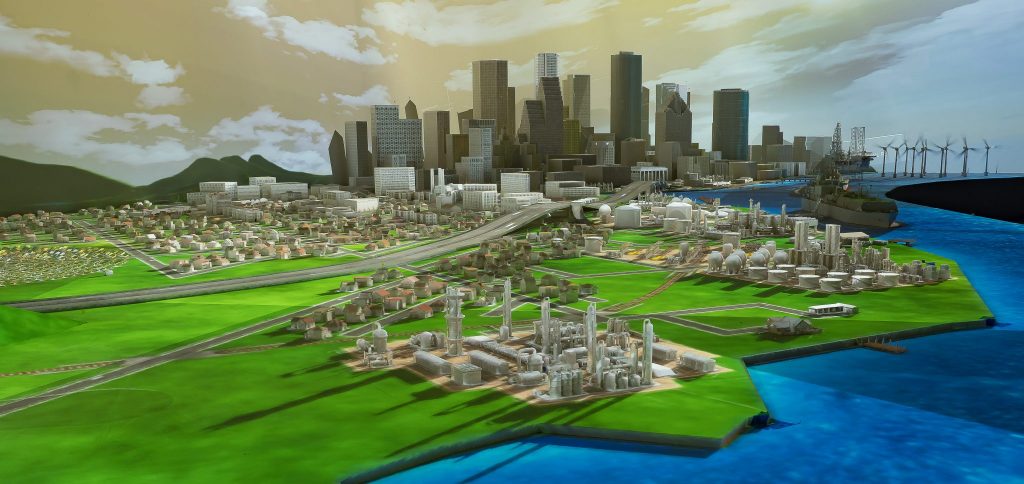RabCup, hired by Paul Bernhard Exhibit Design and Consulting (PBE) to bring the famed “Energy City” to life are now unveiling the details of this epic installation which took over two years to develop.
Energy City is one of the highlight installations in the new Wiess Energy Hall, the most comprehensive energy exhibit in the world. “Energy City,” a 2,500-square-foot 3D landscape designed and fabricated by PBE, represents Houston, the surrounding Gulf coastal waters, and the terrain of southeast and central Texas. This vibrant 1/150th-scale “white model” will use bleeding-edge projection mapping technology to bring to life the energy value chain with dynamic animation as the entire tableau cycles from day to night.
 above: Energy City, Houston Museum; Courtesy of Houston Museum of Natural Science
above: Energy City, Houston Museum; Courtesy of Houston Museum of Natural Science
PBE, the design company selected to create the Wiess Energy Hall at the Houston Museum of Natural Science, chose to work with RabCup on “Energy City” for their extensive projection mapping experience, inventive video solutions, and project management expertise. Assessing the task at hand, RabCup founders AJ Freysteinson and Justin Fortier immediately got to work on assembling the best possible group of field experts to help create this masterpiece installation.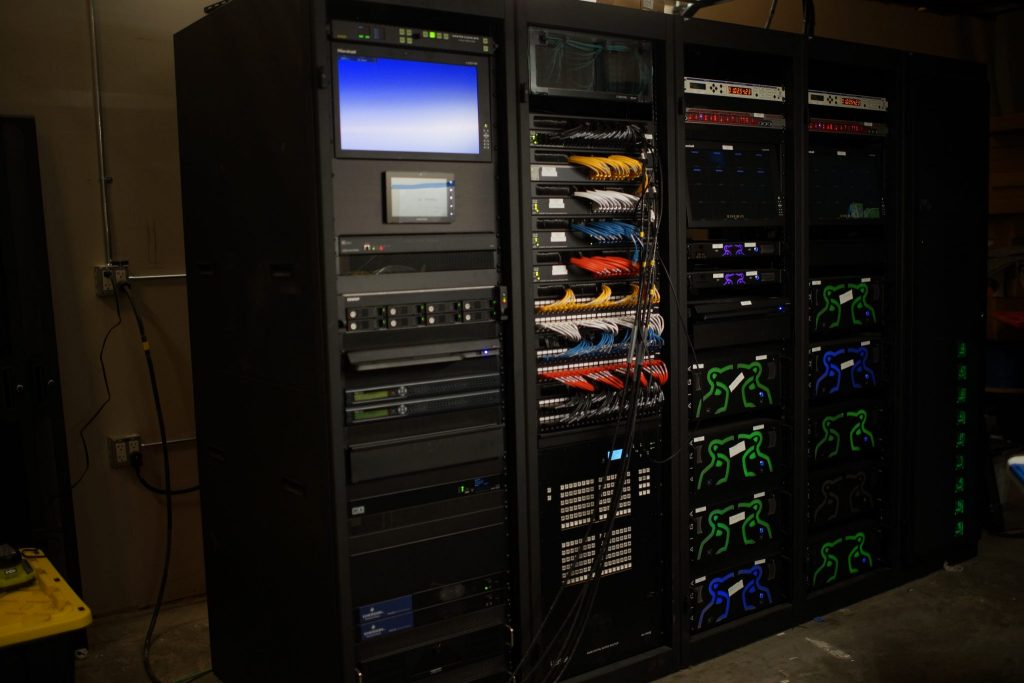
Enlisting Green Hippo to move over 128 megapixels of content in a model that is over 13 million vertices wasn’t the only thing RabCup would need the media server manufacturer for. They also tapped Hippotizer Specialist Cory Froke, to join the endeavor. With a rock solid team in place, the projection study, preliminary system design and projection design complete, it became apparent that existing automated alignment systems were not going to be feasible, technically or financially. Due to the complexity of the model, this would have required a minimum of one camera per projector, likely even more. So the R&D began on an alternative, affordable alignment system that can stand on its own, completely independent of the projection system. With a formidable task at hand, Green Hippo created SHAPE Auto-Alignment, a camera-less, affordable, automated alignment system that can align and blend all 32 projectors at the touch of a button in minutes. 168 fiber optic light sensors embedded into the model, using over 7 kilometers of plastic sensor fiber routed back to custom-built SHAPE Processing Nodes make this possible. Green Hippo’s component-based structure allowed the team to remove any unnecessary features, giving the render engine more resources to deal with playing that much video seamlessly. The 128 Megapixel content delivery resolution is one of the most intricate projection mapping projects ever done (with over 13 million polygons in the model!). 60fps playback is accomplished with ease by a system of (9) Green Hippo Hippotizer Taiga DP, with (2) Hippotizer Amba serving as management machines for the system.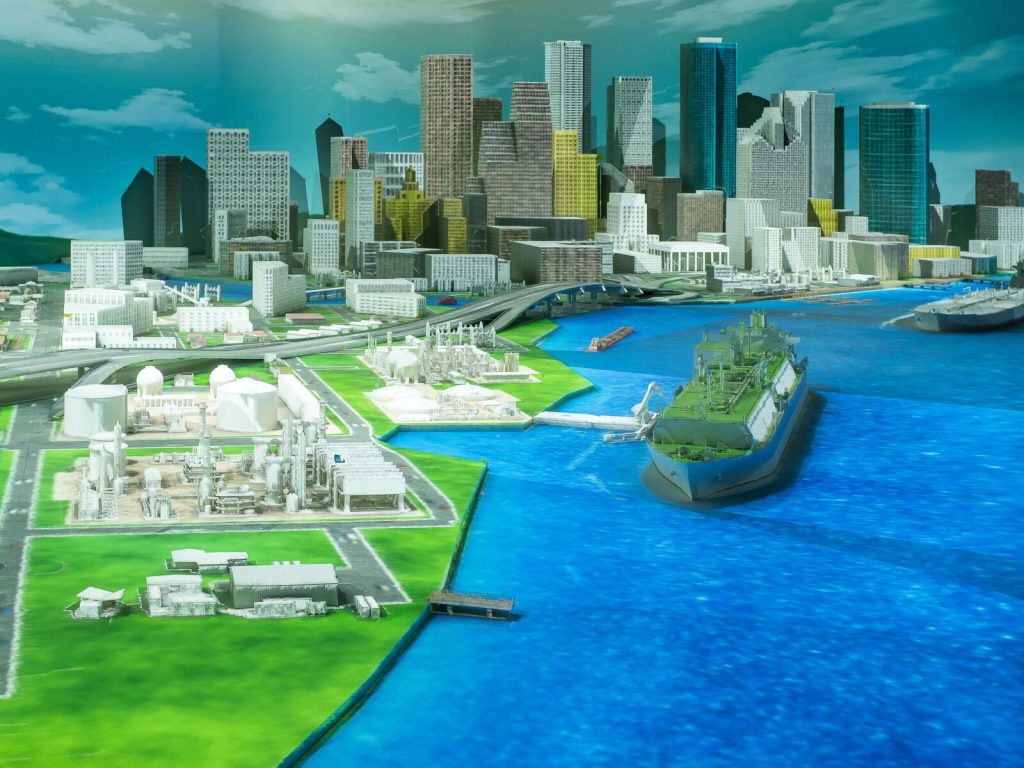 above: Energy City, Houston Museum; Courtesy of Houston Museum of Natural Science
above: Energy City, Houston Museum; Courtesy of Houston Museum of Natural Science
Equally as important to this project was content. Rabcup selected Radar to produce the animated media for Energy City. With a team of over 30 people, including 12 animators, 4 producers, and 4 content writers, Radar created custom content for this installation bringing Houston into focus on the model. Over the course of the project, Radar rendered over 30 TERABYTES worth of content. Final animations show 8 different energy systems and stories as well as a 24 hour time-lapse of the city itself. A fun tidbit to note, if you look hard enough, there are various “easter eggs” built into the city scenes. Viewers can search for such things as a T-Rex, an alien abduction, and then more normal city occurrences like a police chase, and other exciting minutiae.
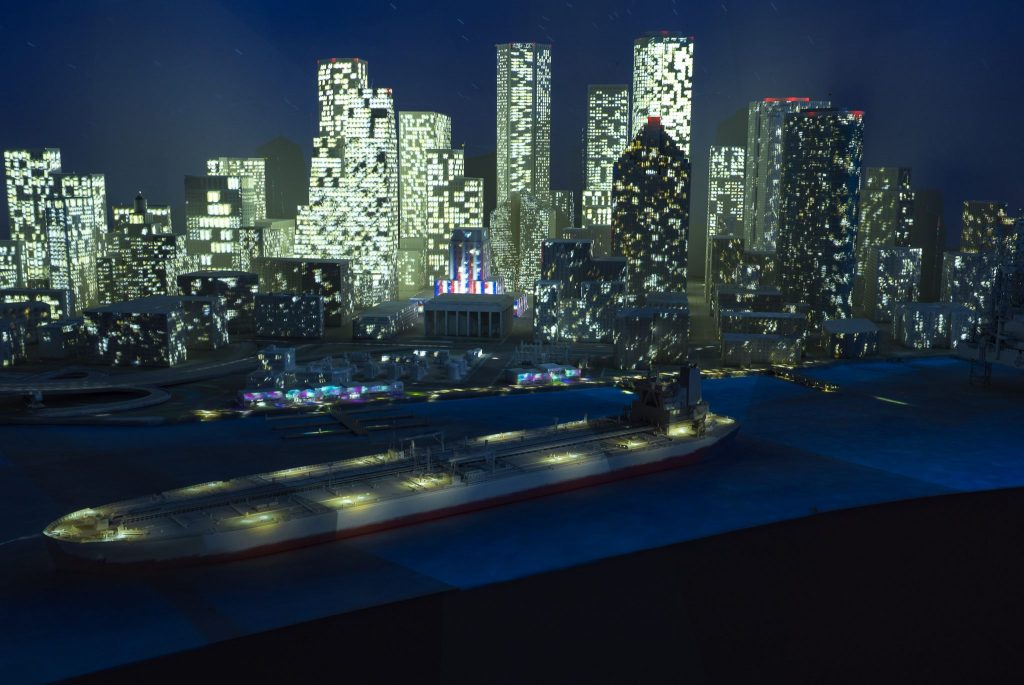
above: Energy City, Houston Museum; Courtesy of Houston Museum of Natural Science
For two and a half years, RabCup worked with PBE to create “Energy City”, recruiting the expertise of Green Hippo and Radar. Together, this team of experts have created a one of a kind exhibit, showcasing new technologies in a fun, educational manner. 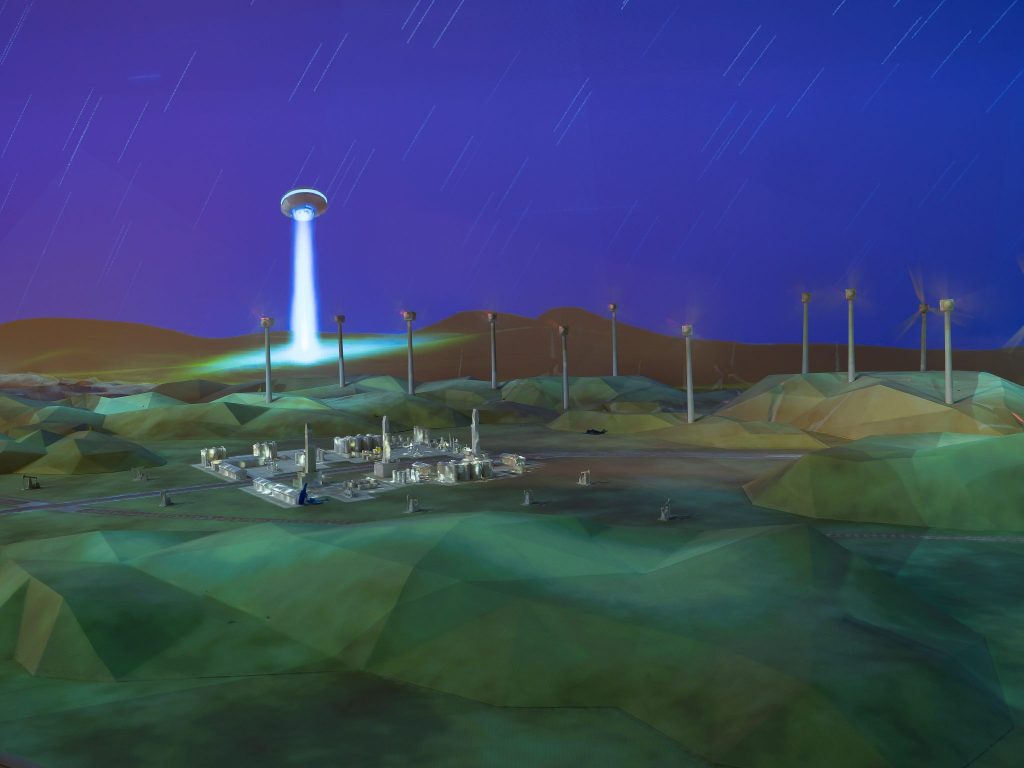 above: Energy City, Houston Museum; Courtesy of Houston Museum of Natural Science
above: Energy City, Houston Museum; Courtesy of Houston Museum of Natural Science
“Collaborating with PBE on this project for the last two and a half years has truly been an honor. They created an astonishing canvas,” said RabCup co-founder Justin Fortier. “It’s an incredible feeling to have your work showcased in such an admired museum, it calls for all of us to bring our best. And having our work centered on education is something we’re are all proud of.”
Working on a museum floor going from concrete to a fully built out tech heavy space, over the course of two years, while engaging some of the most creative people we have ever had the pleasure to be around, has made this experience one of the most exciting projects we’ve ever been a part of.
AJ Freysteinson, RabCup co-founder
The exhibit features 30 minutes of custom content, a five-minute day to night sequence and 8 Science modules. The 6.1 channel audio system with speakers spread across the 80’-wide model create amazing immersive effects. The model features environmental sounds specific to a certain area so that no matter where a viewer is standing, that area will have its own distinct sound. The end result is a stunning visual and audio tour de force, with a new experience every time you walk into the room.
